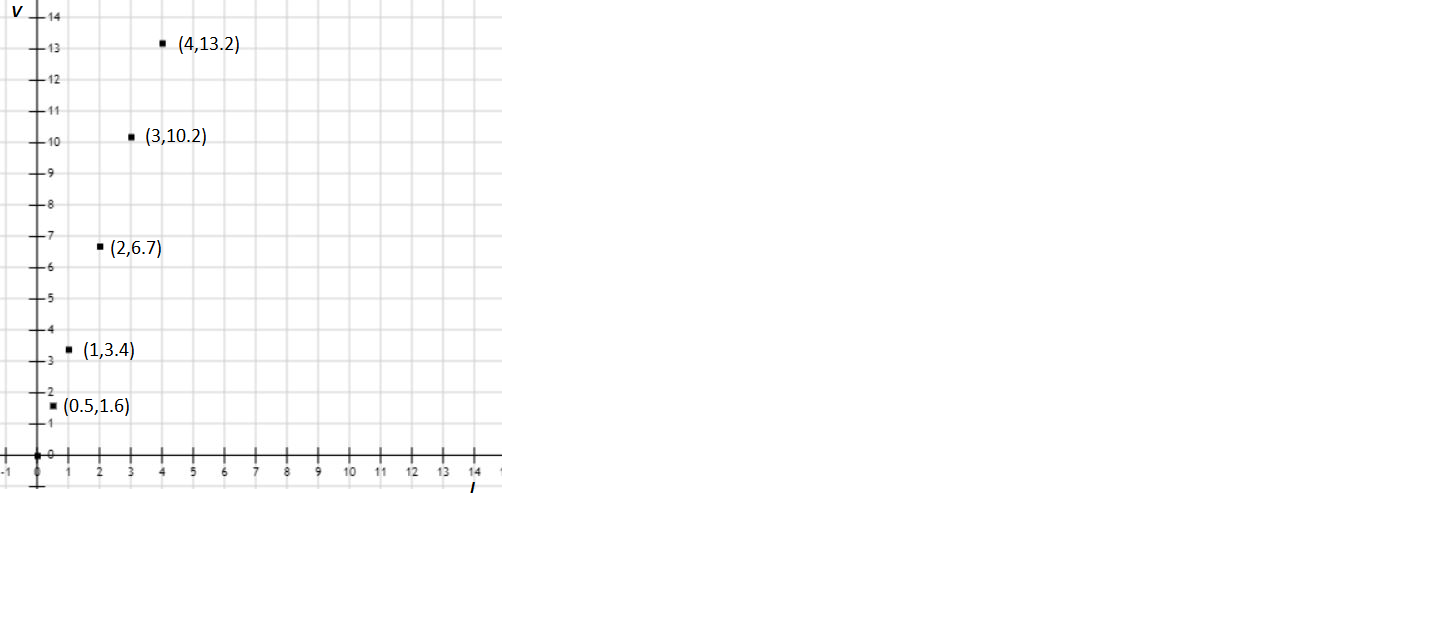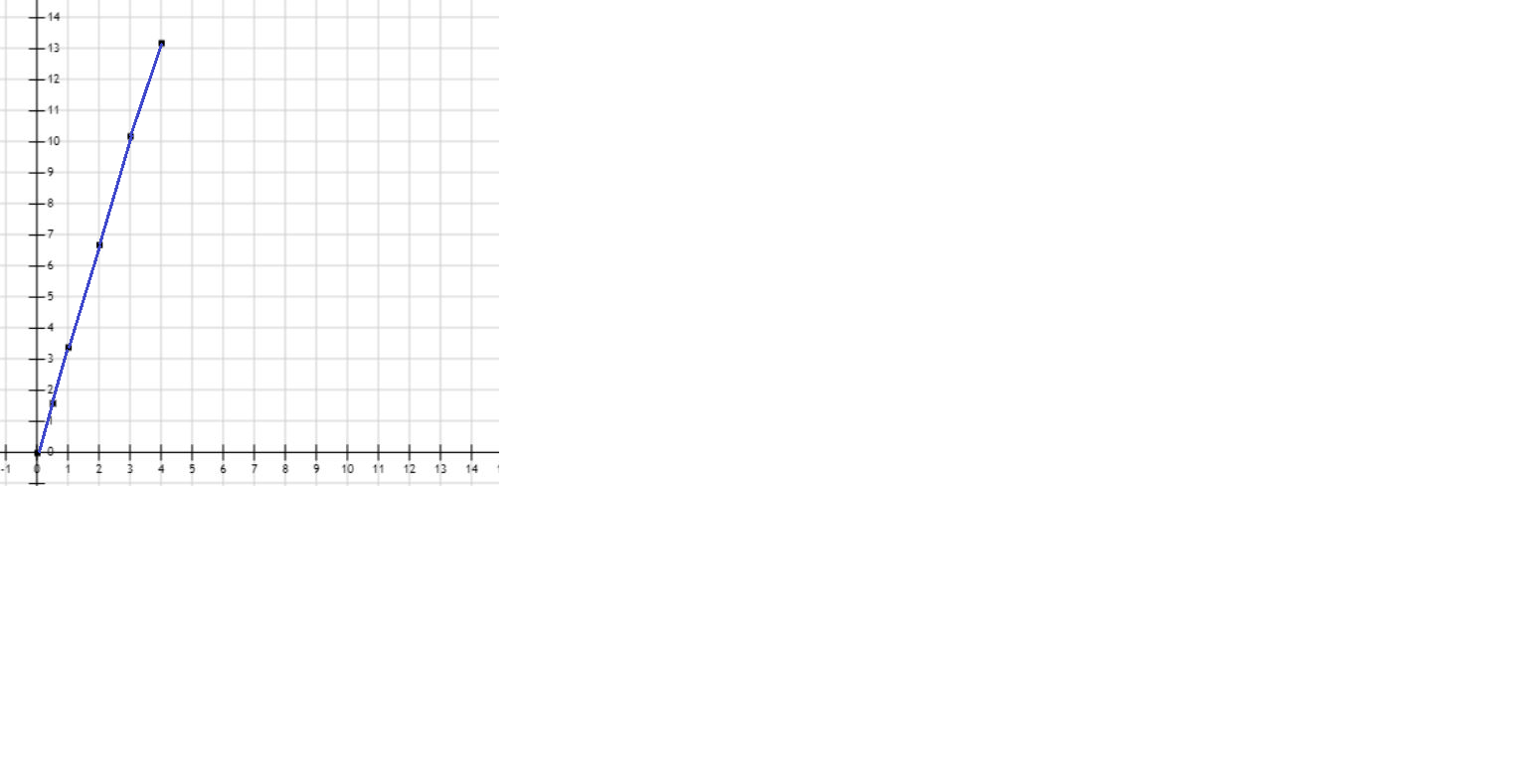Question
Question: The values of current I flowing in a given resistor for the corresponding values of potential differ...
The values of current I flowing in a given resistor for the corresponding values of potential difference V across the resistor are given below:
| I (amperes) | 0.5 | 1 | 2 | 3 | 4 |
|---|---|---|---|---|---|
| V(Volts) | 1.6 | 3.4 | 6.7 | 10.2 | 13.2 |
Plot a graph between V and I and calculate the resistance of that resistor.
Solution
Hint
According to Ohm’s law, a current(I) that flows in a conductor is always proportional to the voltage applied across it (V) and the ratio IV=Rwhere R is the constant called Resistance. If the voltage is increased, the current increases, yet Resistance is constant. Thus, the graph plotted will have a constant slope, and the tanθwill give the value of Resistance.
⇒R=IVWhere R is the resistance in conductor, V is the Voltage applied and I is the flowing current.
⇒Rmean=5R1+R2+R3+R4+R5
Equation of a line: y=mx+c
Complete step by step answer
We plot the graph between V and I manually which means that a point is marked in the graph wherever the corresponding values of V and I match, there will be a total of 5 points.

-After this we join all the points, resulting in creation of the graph.

There are 2 methods to solve the resistance, let us see them one by one.
Method 1: We take all 5 values of I and V and calculate 5 values of R
⇒R1=IV=0.51.6=3.2Ω
⇒R2=IV=13.4=3.2Ω
⇒R3=IV=26.7=3.35Ω
⇒R4=IV=310.2=3.4Ω
⇒R5=IV=413.2=3.3Ω
-Now we take the mean of all values of R
⇒Rmean=53.2+3.4+3.35+3.4+3.3=516.85=3.37Ω
Thus the Resistance in the conductor is equal to 3.37Ω
Method 2: This is a short cut method, it uses the fact that the relation between V and I is linear, which means when plotted, the graph must form a straight line.
Here, you may take any value of I and the corresponding value of V and divide them, but for better accuracy, here we are taking the average values of V and I,
⇒Vavg=5V1+V2+V3+V4+V5
⇒Vavg=51.6+3.4+6.7+10.2+13.2=7.02V
⇒Iavg=5I1+I2+I3+I4+I5
⇒Iavg=50.5+1+2+3+4=2.1A
Equation of the line in V-I graph may be compared to,
⇒y=mx+c
⇒V=IR+c
We know that, for V=0, I=0 (When no voltage is applied, no current flows through the conductor)
So,c=0
The equation of line now becomes
⇒V=IR
By putting the values of Vavg and Iavg,
⇒7.02=2.1×R
⇒R=2.17.02=3.34Ω.
Note
The accuracy of method 2 may vary according to the accuracy of observation. If the values given in the question are errorless, the answer delivered by method 2 would be the same as in method 1. But in practical, observation has errors (like in this question), therefore the graph will not be a straight line, but will be in the form of zig-zag at a very small scale. So it is better to use Method 1 for the greatest accuracy.
